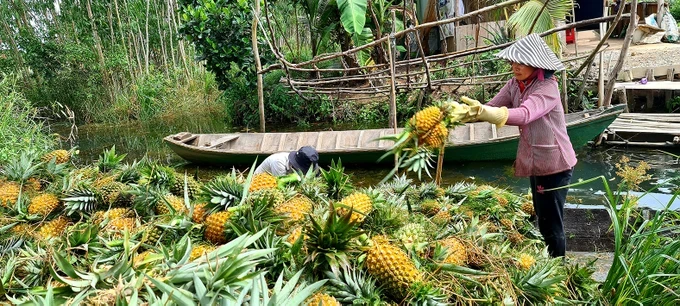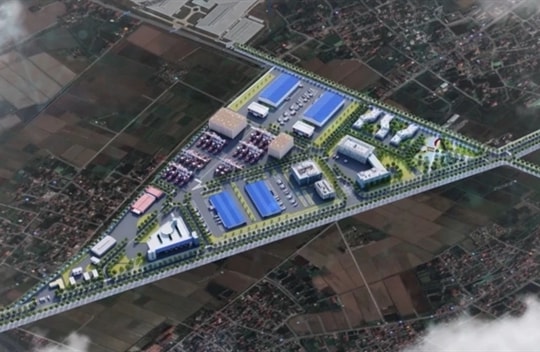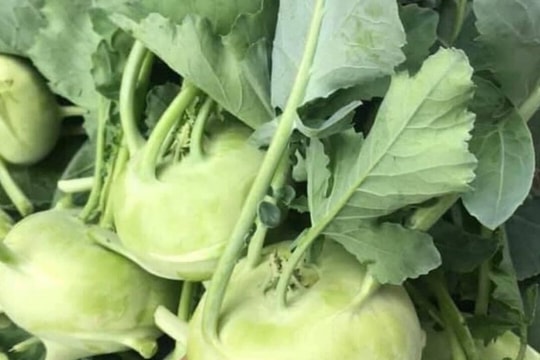
Director Nguyen Nhu Cuong of the Crop Production Department under the Agriculture and Rural Development Ministry (MARD) shared that farmers in some localities continue to switch to durian cultivation driven by high durian prices. However, durian prices have a history of volatility, raising concerns about a potential “bountiful harvest with extremely low price” scenario if local authorities fail to adhere to recommended planning guidelines.
MARD has issued numerous documents urging localities in the Mekong Delta, Southeast, and Central Highlands regions to refrain from uncontrolled durian cultivation. In 2022, MARD approved the National Fruit Tree Development Project by 2025, with a vision to 2030.
The project recommends limiting durian acreage to 65,000-75,000ha by 2030, with production estimated at 830,000-950,000 tonnes. Durian cultivation should be concentrated in specific provinces within the Mekong Delta (Tien Giang, Vinh Long, Ben Tre), Southeast (Dong Nai, Binh Phuoc), and Central Highlands (Lam Dong, Dak Lak, Dak Nong) regions.
While the project provides guidance, MARD cannot truly prohibit farmers or agricultural businesses from cultivating any specific crops. However, local authorities can implement sanctions in cases of land conversion that violates land-use regulations.
MARD emphasizes avoiding acreage expansion for fruits that have already been planned for, particularly in areas with unsuitable climate, soil conditions, or water scarcity. Instead, MARD encourages localities to focus on their local agricultural strengths, invest in infrastructure and centralized production, and prioritize deep processing, packaging for export, and tapping into new markets for businesses.
The issue of exceeding planned acreage extends beyond durian, affecting other crops such as coffee, pepper, jackfruit, pineapple, dragon fruit, and citrus fruits. MARD has identified 14 key fruit trees for export, but localities should also develop unique products based on their specific soil and climate conditions, avoiding replicating the practices of other regions. MARD's planning approach is not rigid but rather adaptable, allowing for the inclusion of crops with high domestic and export market potential.
More importantly, to prevent the violation of planning guidelines for key crops, MARD advocates for strengthening the legal framework and implementing robust sanctions to hold localities accountable for their oversight responsibilities.
Director Tran Vinh Nghi of Soc Trang Province Crop Production and Plant Protection Division proposed that to ensure the effectiveness of agricultural zoning and minimize unplanned cultivation, local authorities must prioritize effective management and production guidance. Soc Trang Province annually develops plans to clearly outline designated areas for specific crop and livestock conversion on paddy land.
As long as the local authorities at district and commune levels can cooperate well with the agricultural sector, cooperatives, and agricultural promotion forces, farmers will be well-educated as to crop zoning and agricultural production schedules in their areas, which will ultimately minimize unwanted risks while maximizing economic values.
Another necessary measure is to establish reliable market forecasting channels and to strengthen communication and connectivity so that farmers can make informed decisions regarding crop and livestock selection based on both soil conditions and market demands.
Chairman Lu Quang Ngoi of the Vinh Long Province People’s Committee emphasized the need to strictly monitor and manage crop zones. He mentioned a number of key methods adopted in the province in the upcoming time.
Crop zones will be developed according to the province's overall socioeconomic development plan. Production Unit Codes (PUCs) and Packing House Codes (PHCs) will be added into the annual socioeconomic development resolutions, programs, projects, and action plans of Vinh Long Province.
Resources will be mobilized to assist farmers in obtaining PUCs, packaging their products, ensuring product traceability, and linking them to agricultural product consumption channels. Agricultural support policies will be implemented incentivize the development of zoning and packing houses in line with the requirements of export markets.
Simultaneously, functional agencies are asked to develop a plan for establishing and managing PUCs and PHCs following central government guidelines. While pesticide residue monitoring programs are being implemented, trade promotion activities are carried out, along with providing farmers with timely market information, forecasts, and market-specific agricultural product standard and quality requirements.
Strategies will be applied to connect and expand market access and distribution channels, including e-commerce, for the province's agricultural products.
Dr Vo Huu Thoai, Head of the Southern Horticultural Research Institute shared that agricultural zoning can be broadly categorized into two types of existing crop zones and new crop zones.
The former encompasses areas where specific crops are already established. In such cases, the focus lies on attracting businesses to invest in collection facilities, cold storage, and primary processing infrastructure.
However, government support for essential infrastructure, particularly roads and bridges, is crucial. The current state of roads in rural areas, often narrow and with limited weight capacity, poses challenges for agricultural product transportation. Additionally, a reliable electricity supply is essential for businesses operating cold storage and processing facilities.
Another challenge lies in the diversity of crop varieties within existing zones, creating more difficulties for businesses in terms of standardized collection and processing. Meanwhile, farmers' reluctance to adopt new technologies and practices can hinder productivity improvements. While they may be open to new ideas presented by agricultural extension officers, they often remain cautious due to their confidence in their own accumulated experience.
In the latter, farmers strictly follow any instructions from functional agencies. Crop growers are provided with seeds, fertilizers, loans and training. The state can easily plan better roads and infrastructure. Nevertheless, as these are new zones, crop yields are usually not as expected. Agricultural experts from the state should closely work with local farmers for crops that satisfy international standards before calling for more investments from businesses.
No matter what strategies are developed, farmers' limited financial resources often lead them to prioritize immediate income generation, driving them to focus on high-demand crops without considering long-term sustainability or zoning guidelines.
The state should disseminate agricultural knowledge and promote the adoption of scientific techniques through extension services and training programs can address the knowledge gap among farmers. Better infrastructure should be constructed to attract more investments from potential businesses.


























